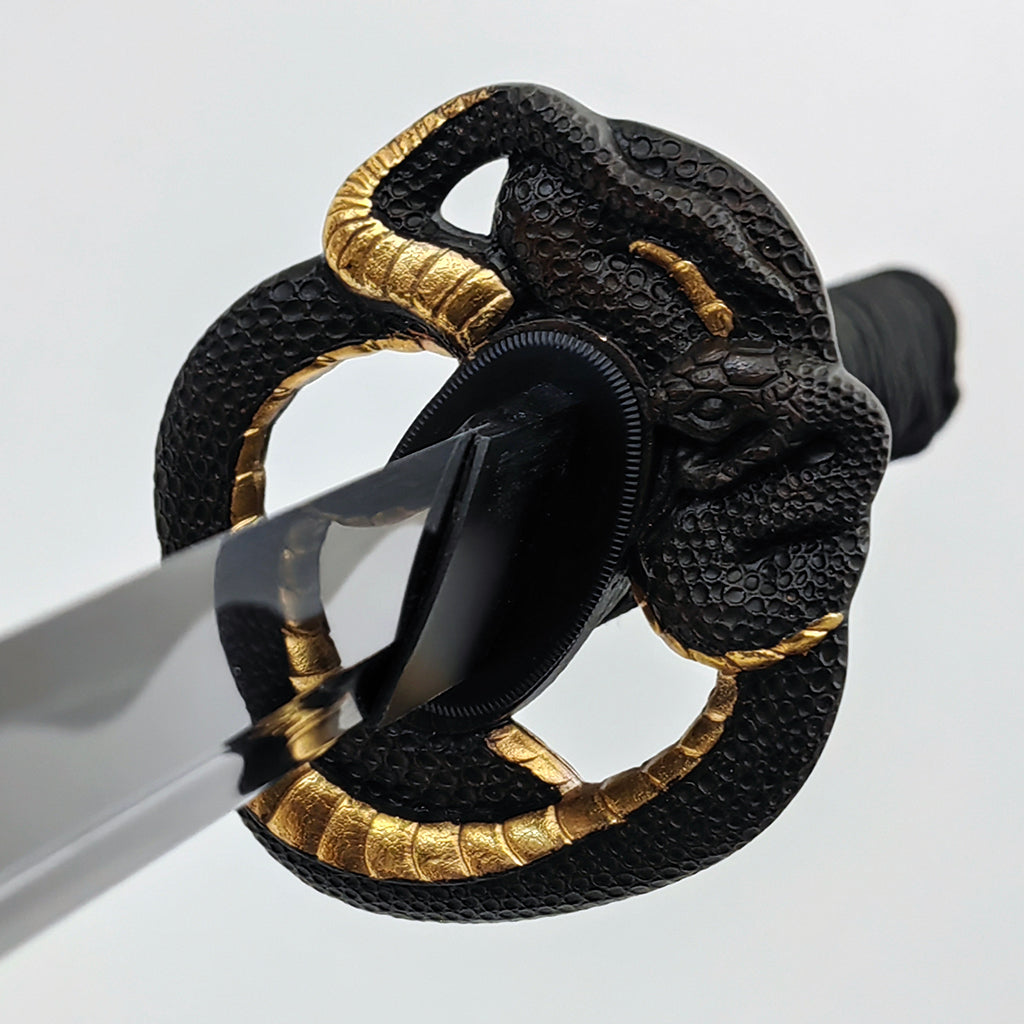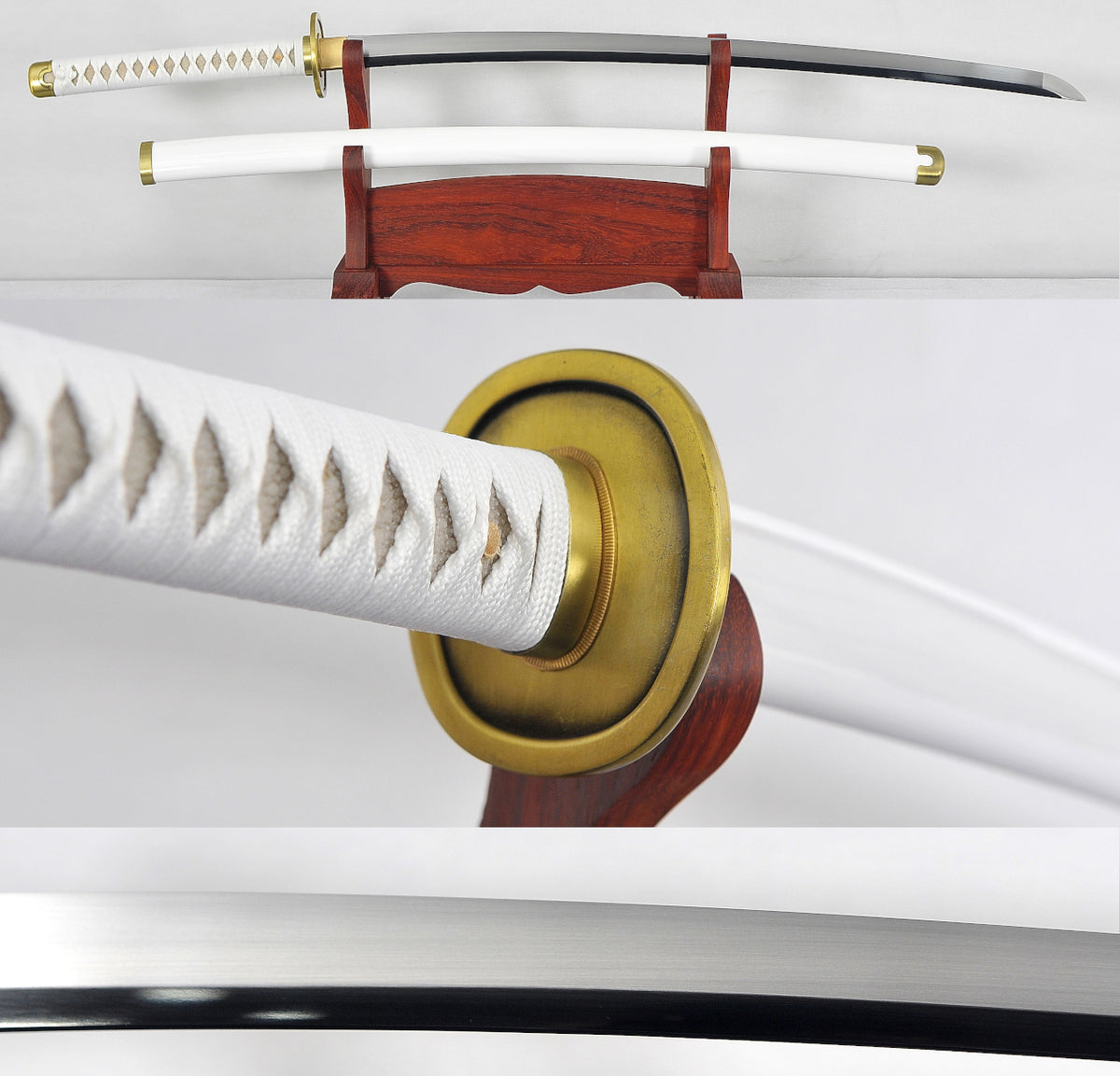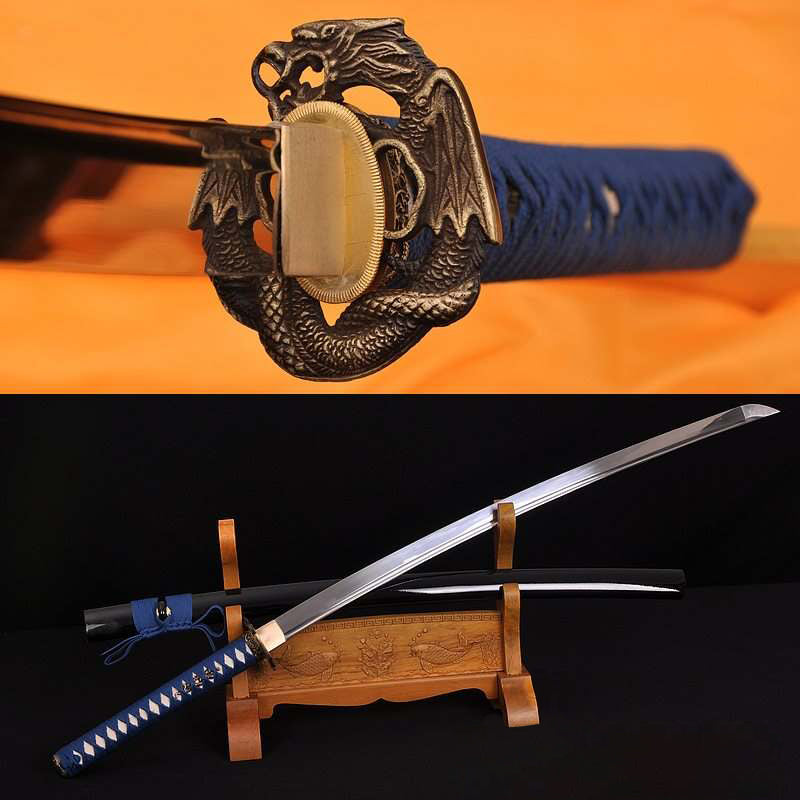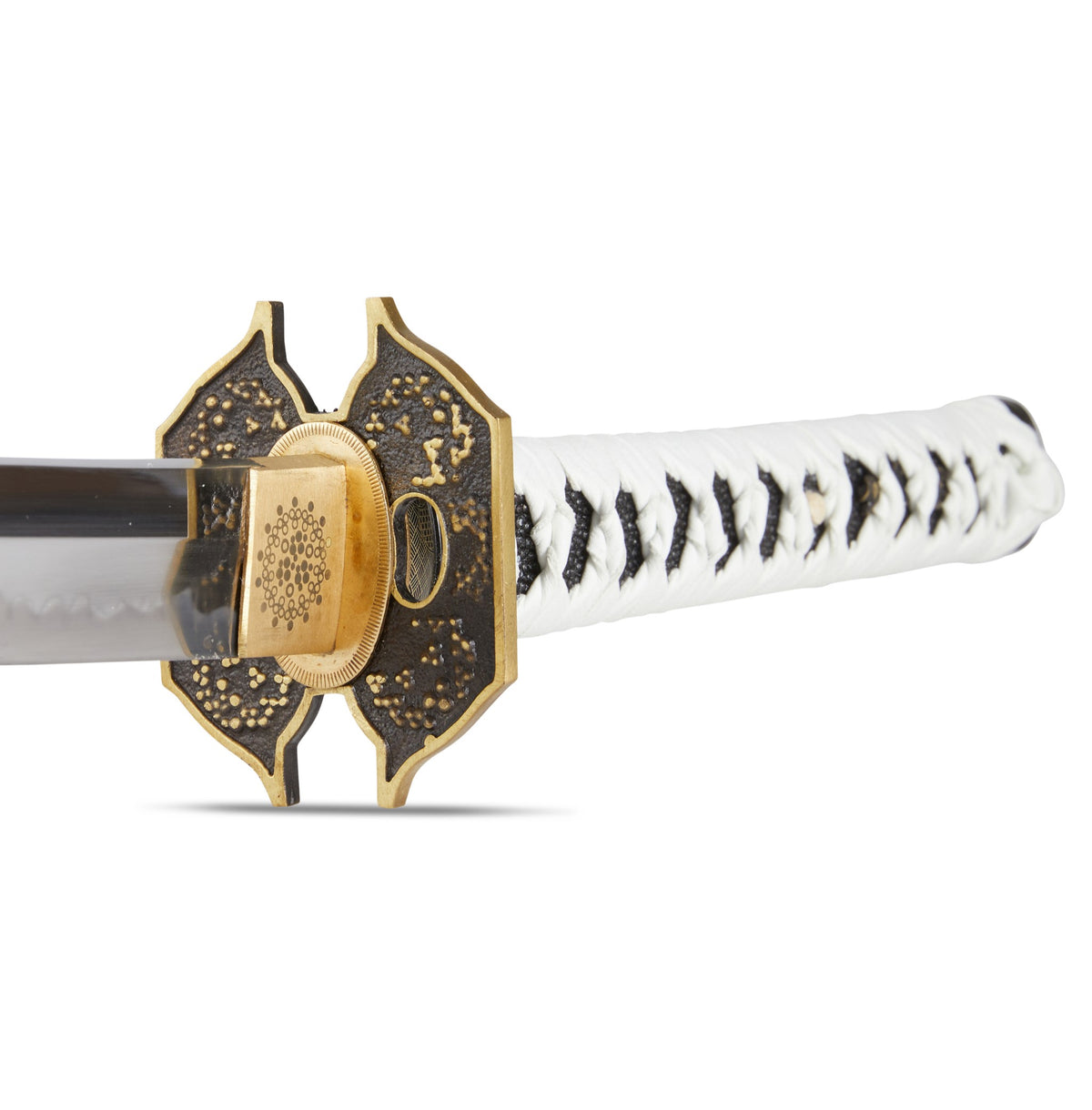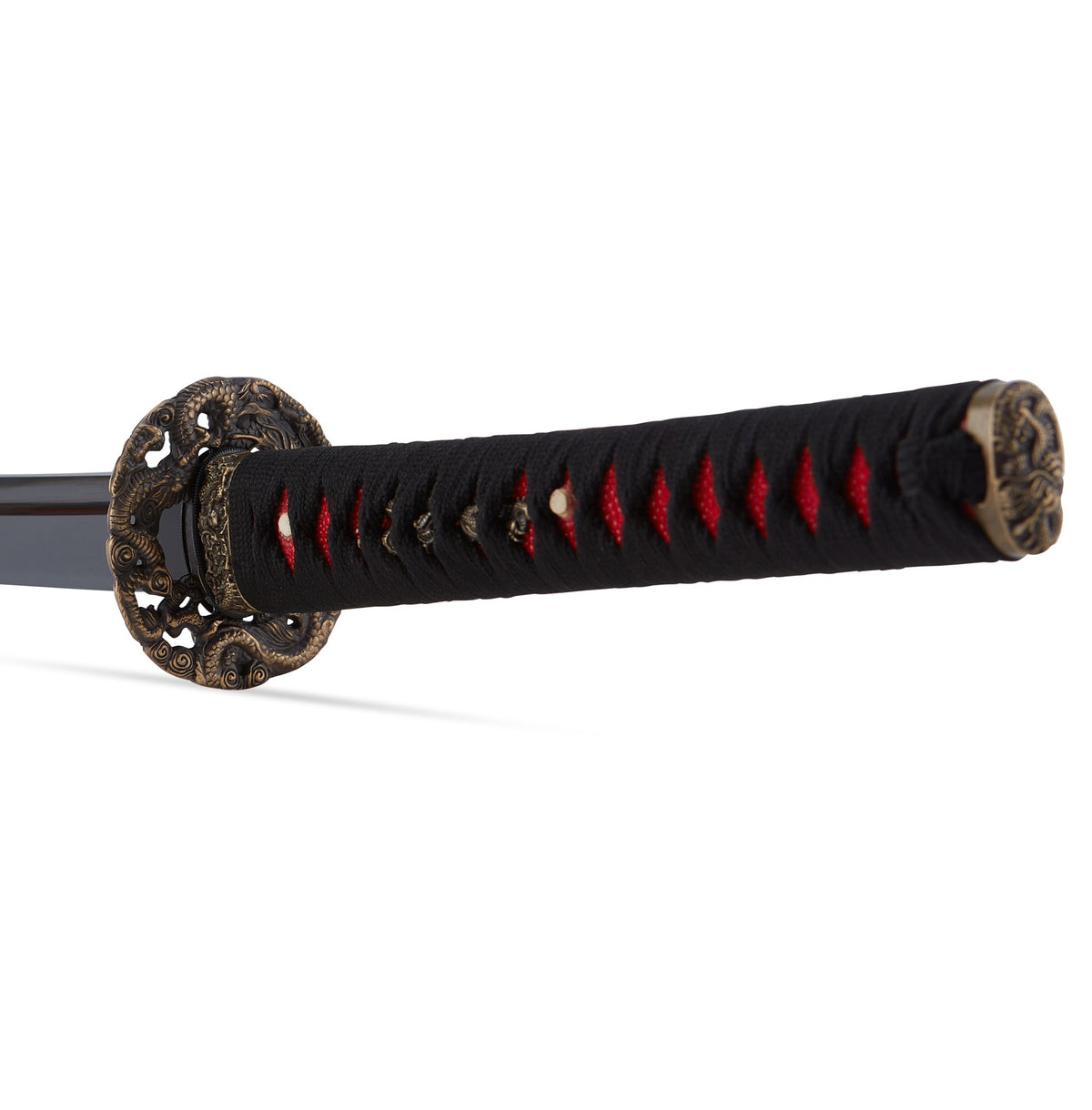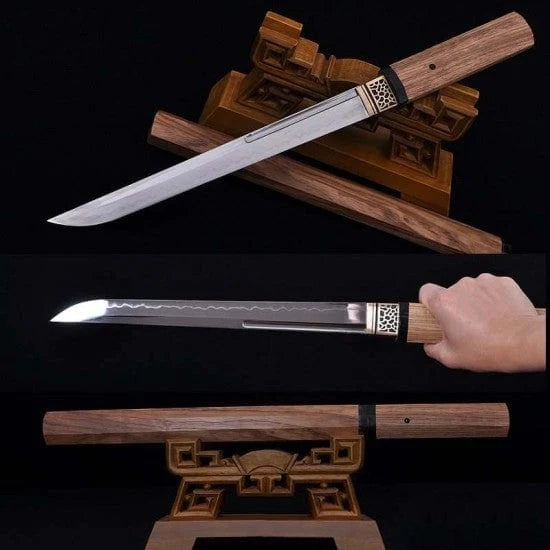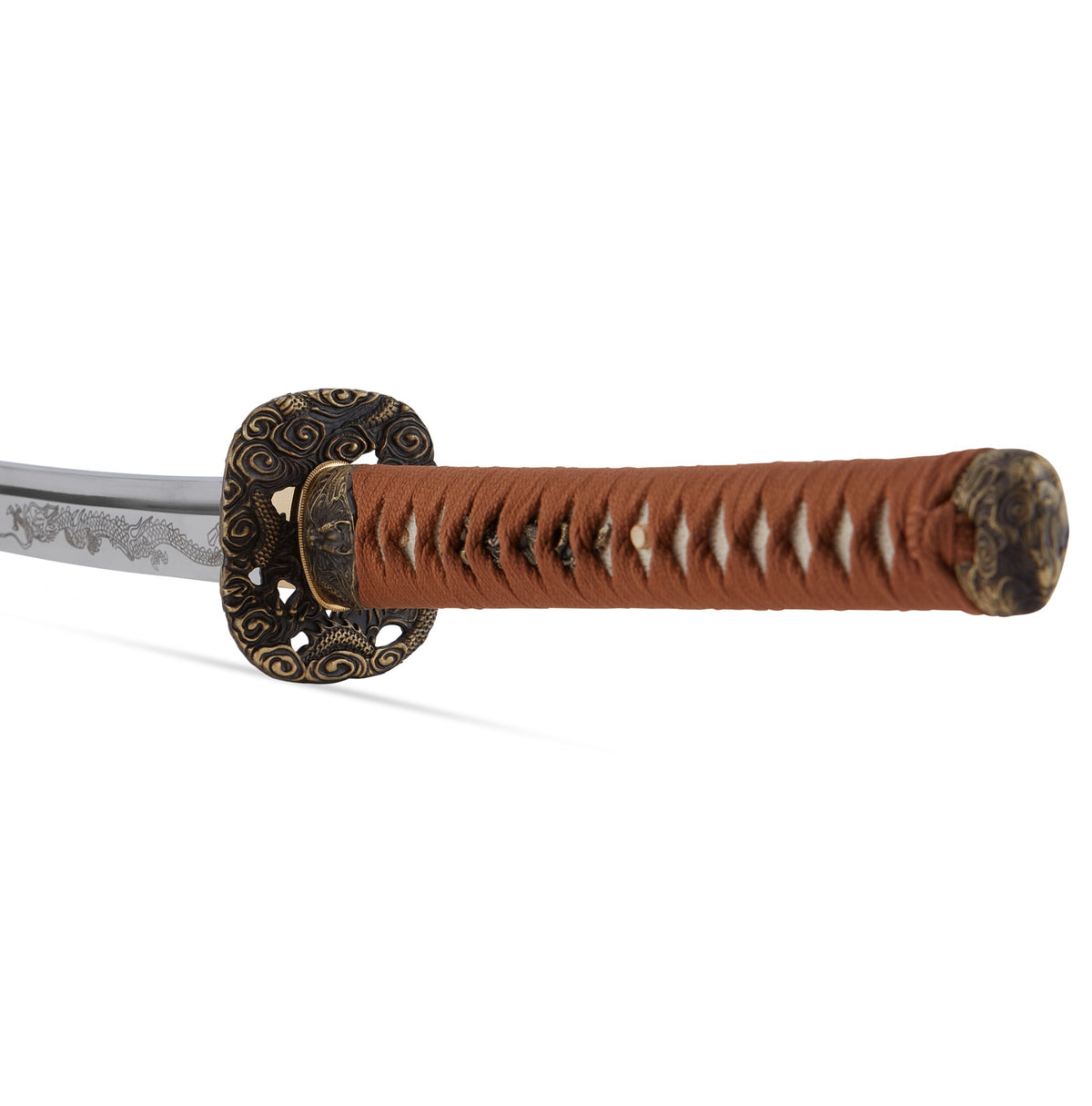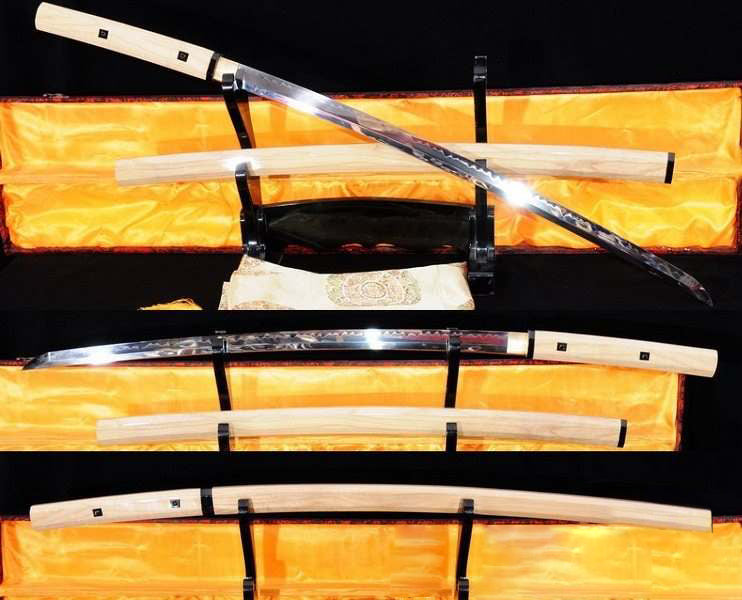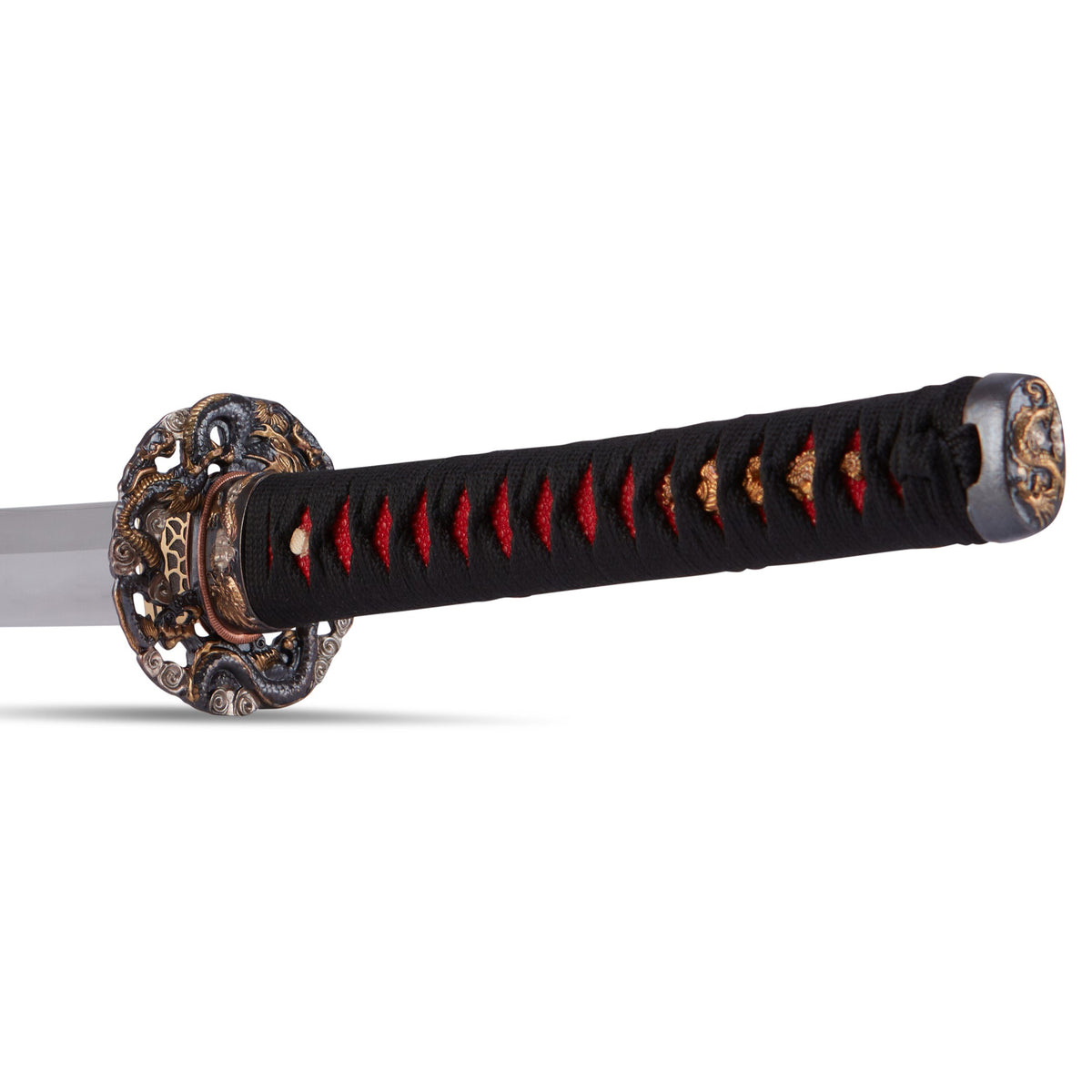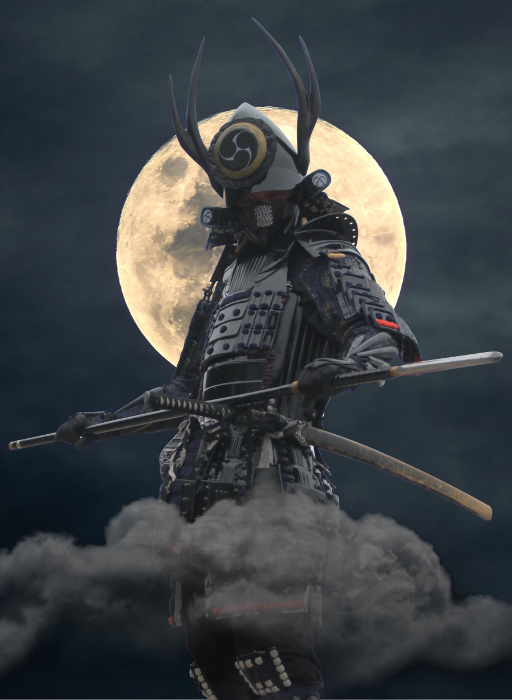5 Myths about Samurai and Japanese Swords
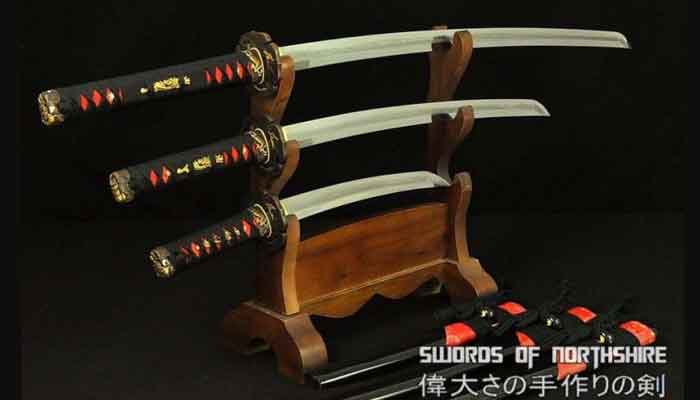
Japanese swords are renowned all over the world, but some of their famous aspects are actually just sword myths. Here are 5 surprising myths about Japanese and samurai swords that you may not have known.
1. Folded steel gives the blade greater strength
Folding the steel is not a magical process that is needed to make the best blade in the world, and the idea that it creates a stronger blade is a sword myth. Steel needs to be hammered down and folded several times only if the blade material you’re working with is impure. Pure, homogenized, high-quality steel does not need to be folded, and can in fact be weakened from the folding process when it’s not done correctly.

Folding is a process to remove impurities and homogenize the steel. In feudal Japan, swordsmiths used a material called tamahagane, which consisted of iron sand and charcoal smelted in a clay tatara furnace. This blade material was very impure, with gaps in the steel, undesirable elements, and an uneven distribution of carbon. You don’t want areas with concentrated levels of carbon, because this creates brittle, weak points in the blade that could lead to the wielder’s demise if their sword is broken.
This particular sword myth is rooted in truth because Japanese swords were traditionally folded to even out the carbon content for a stronger material and create a blade free of impurities. Modern steel is pure, so folding is only done for tradition's sake and for the aesthetic of the fine grain pattern it creates on the blade.
2. Samurai swords are razor sharp
 If your katana cuts through paper like butter and can split a silk scarf dropped on the cutting edge, you’ll likely be disappointed when you try to cut something harder like thick bamboo. You might cut through these targets with ease at first, but when inspecting the blade afterwards you’ll notice several chips and rolls along the cutting edge. Although a super sharp blade sounds exciting, the idea that sharp swords work better is just a katana myth.
If your katana cuts through paper like butter and can split a silk scarf dropped on the cutting edge, you’ll likely be disappointed when you try to cut something harder like thick bamboo. You might cut through these targets with ease at first, but when inspecting the blade afterwards you’ll notice several chips and rolls along the cutting edge. Although a super sharp blade sounds exciting, the idea that sharp swords work better is just a katana myth.
Japanese swords were not made so they could cut through printer paper. A samurai depended on his sword with his life and needed his blade to retain its cutting edge even after slicing through his enemy’s bones and bashing against their iron armor. Traditionally, Japanese swords are made with a convex edge, called Niku, similar to how an axe is made. This way, the edge could still be sharp but also have great durability. Additionally, it could be resharpened many times, which is very important considering that traditional Japanese swords take months on end to craft. Either way, most of a sword’s power is in the wielder’s precision and strength – In the right hands, even blunt blades can cut through tatami mats.
3. Samurai were ruthless, savage warriors
 While some samurai are known to have committed seemingly ruthless acts such as murdering their own kin and testing their swords on prisoners, the idea that they used their swords indiscriminately is simply a katana myth. In fact, samurai had a serious sense of honor which they upheld to the very end. They took this moral code further than any other warrior in history – Even before a duel to the death, they would bow before their opponent and fight with no hatred in their heart. They respected every object, their fellow samurai, and even their enemy.
While some samurai are known to have committed seemingly ruthless acts such as murdering their own kin and testing their swords on prisoners, the idea that they used their swords indiscriminately is simply a katana myth. In fact, samurai had a serious sense of honor which they upheld to the very end. They took this moral code further than any other warrior in history – Even before a duel to the death, they would bow before their opponent and fight with no hatred in their heart. They respected every object, their fellow samurai, and even their enemy.
One fact about samurais is no sword myth – seppuku. When one samurai had the edge and the other was defeated, the defeated samurai would take their sword and cut themselves across the stomach to preserve their honor. Once they had shown they were in agony, the victor would quickly behead them to end their pain. Not only that, but they would even take care that no passers-by would be offended by witnessing the rolling head on the ground.
4. Japanese swords were folded thousands of times
 You might have heard someone say that samurai swords were folded thousands of times, and if it’s on the internet it’s true, right? Actually, this huge misconception is just another sword myth. Although Japanese swords indeed had thousands of layers, they were only folded several times to create this effect. When you fold steel once, it creates two layers, on the next fold four, and the next eight. With 10 folds, the steel will have around 1,024 layers.
You might have heard someone say that samurai swords were folded thousands of times, and if it’s on the internet it’s true, right? Actually, this huge misconception is just another sword myth. Although Japanese swords indeed had thousands of layers, they were only folded several times to create this effect. When you fold steel once, it creates two layers, on the next fold four, and the next eight. With 10 folds, the steel will have around 1,024 layers.
Most swords were only folded around 12-15 times, creating an average of around 20,000 layers. Very rarely they were folded up to 20 times, creating 1,000,000 layers. Once you get to this point though, the layers will start to break up and you are back to almost uniform steel. Relating back to our first sword myth, Japanese swords were only folded to remove impurities from a less-than-perfect material. Once this is achieved, there is no point to continue the process with unnecessary folds.
5. Japanese swords can cut through other swords and gun barrels
Japanese swords can be very strong and highly durable when well-made, but can they really cut through other swords and gun barrels? Not likely. Unfortunately, this exciting idea is a katana myth perpetuated by movies. Pre-modern guns were made of softer materials like iron alloys and brass, so it might have been possible at the time, but a sword is no match for the quality of guns made today. 
There is also nothing special about a Japanese sword that would give it an edge over a European broadsword, for example. When two swords with similar hardness are put against each other, the thinner sword will likely break or bend first. Japanese swords were designed to be precision killers, not to clash full force against other blades. Samurai duels were not long, drawn-out affairs with blades meeting on each swing. It’s likely each samurai took only one or two strikes until the fight was over. A skilled samurai could spot the weak points in an enemy’s armor and sever the main artery with one precise cut, causing his opponent to quickly bleed out.
Although many common sword myths may be inaccurate, the truth is that Japanese swords are world-class weapons. There’s a reason that Japanese swords are respected all over the world, and it isn’t because they can slice through a sheet of paper – it’s because they’re hand-crafted from high-quality materials, using techniques that have existed for thousands of years. Explore our store today to find your own piece of sword history.
Best Sellers
- Regular Price
- from $199.99
- Sale Price
- from $199.99
- Regular Price
-
- Unit Price
- per
- Regular Price
- from $299.00
- Sale Price
- from $299.00
- Regular Price
-
- Unit Price
- per
- Regular Price
- from $199.00
- Sale Price
- from $199.00
- Regular Price
-
$0.00
- Unit Price
- per
- Regular Price
- from $619.00
- Sale Price
- from $619.00
- Regular Price
-
- Unit Price
- per
- Regular Price
- from $319.00
- Sale Price
- from $319.00
- Regular Price
-
- Unit Price
- per
- Regular Price
- from $249.00
- Sale Price
- from $249.00
- Regular Price
-
- Unit Price
- per
- Regular Price
- from $339.00
- Sale Price
- from $339.00
- Regular Price
-
- Unit Price
- per
- Regular Price
- from $219.00
- Sale Price
- from $219.00
- Regular Price
-
- Unit Price
- per
- Regular Price
- from $364.00
- Sale Price
- from $364.00
- Regular Price
-
- Unit Price
- per
- Regular Price
- from $519.00
- Sale Price
- from $519.00
- Regular Price
-
- Unit Price
- per
